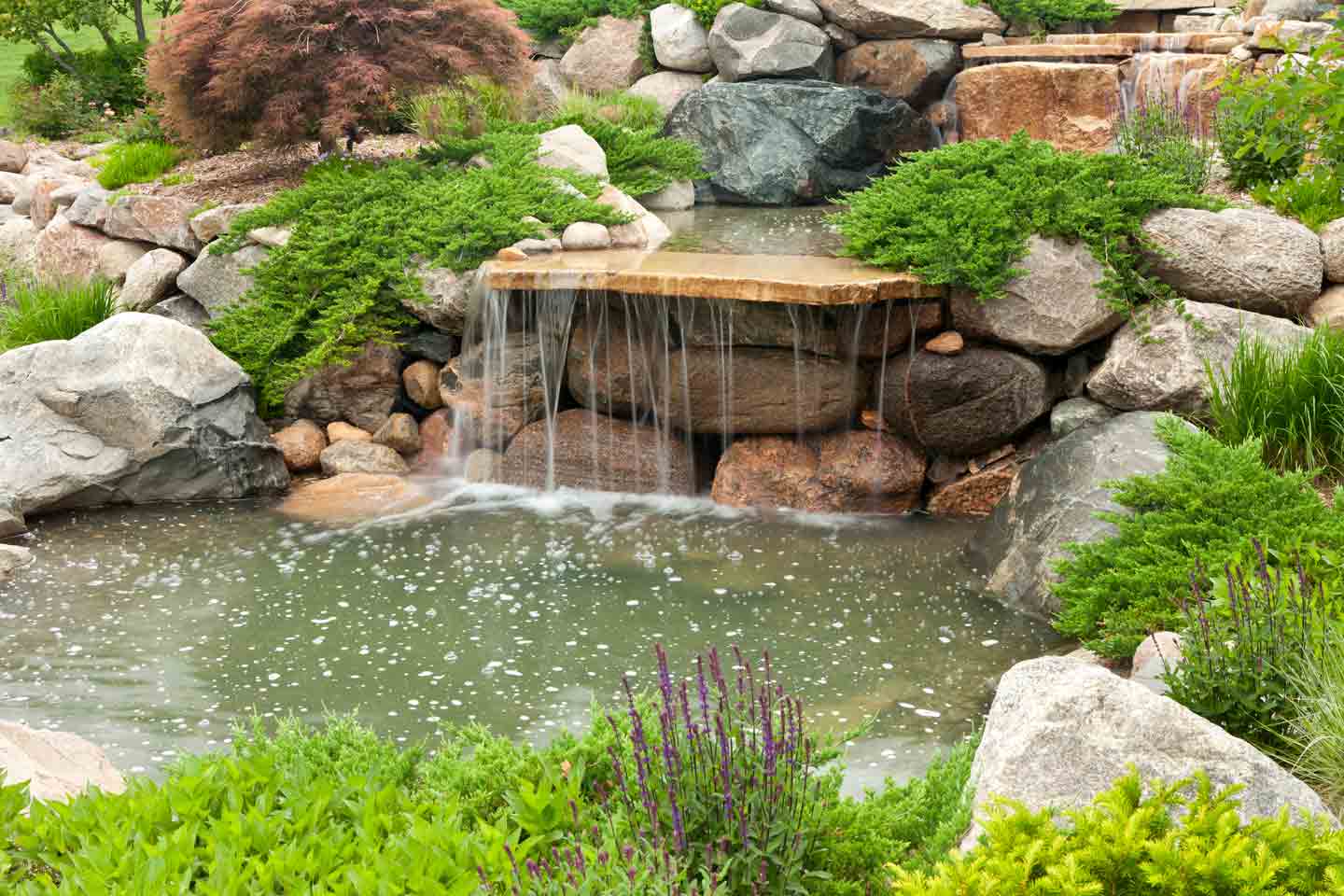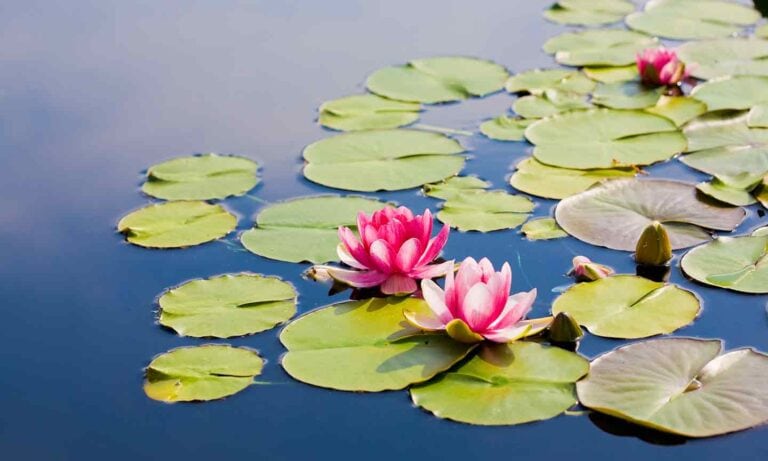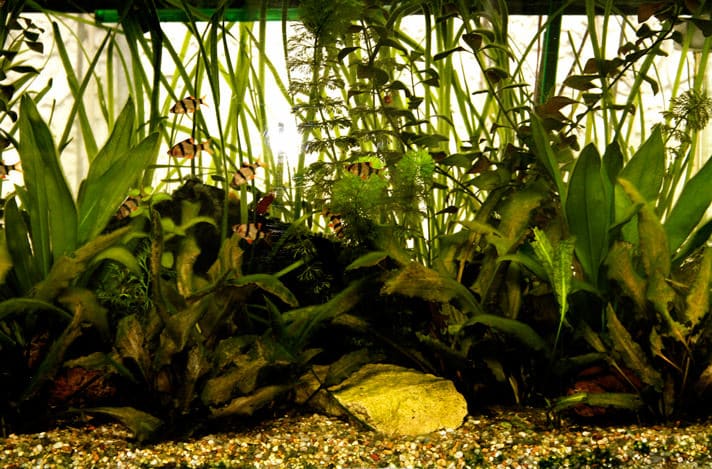Aeration can make or break your backyard pond. Without it, your fish and aquatic plants can't survive. So, what's the best way to aerate your pond?
Choosing the right equipment is the key to minimizing pond maintenance requirements and maximizing visual appeal. In this guide, we’ll discuss the benefits of pond aeration and explore the different methods of aerating a pond.
In This Guide:
Benefits of Aerating a Pond
Pond filters work primarily by removing undesired substances from the water column. A pond aeration system, on the other hand, adds something essential: oxygen. Aerating a pond involves increasing the dissolved oxygen levels in the water, where it can be utilized by fish, aquatic plants, and the beneficial bacteria that facilitate the nitrogen cycle.
Some benefits of aerating a pond include:
- Improves dissolved oxygen levels to support fish and aquatic plant health
- Encourages the release of harmful gasses trapped in sediment
- Promotes the conversion of phosphorus into nutrients algae can’t feed on
- Reduces the potential for mosquito activity on the pond surface
- Eliminates thermocline—the stark temperature difference between upper and lower water levels
- Boosts the aesthetics of a pond by improving water quality and clarity
“Generally speaking, you want to have good circulation to keep the pond water as fresh as possible,” says Tim Wood, an Aquascape® contractor and founder of Aquatic Edge Pond & Landscape Solutions in Pittsburgh. He adds that water aeration is an effective and low-cost way to accomplish this goal.
Methods of Aerating a Pond

Before you start building a pond, purchase essential equipment—like your filter and pond aerator—and read the instructions to be sure you know where and how to install it properly. If you’re not sure what kind of pond aeration system is best for your design, the following overview of common pond aeration methods may help you decide.
1Diffused Aeration Systems
These systems typically involve an external compressor or aeration pump, which pushes air through a line of weighted tubing that runs into the pond. The tubing is connected to a diffuser or bubbler, which releases the air in tiny bubbles that float to the surface.
Diffused aeration systems come in an array of sizes for ponds of varying depth, but they are particularly effective for very large or very deep ponds.
According to Wood, placement is key when using these aerators for ponds. “Place your aeration compressor in an area where it is somewhat protected,” he says, “and make sure the diffuser is in the deepest section of your pond.” If you keep fish in your pond over the winter, move the diffuser to a shallower section so the deepest, coldest area remains undisturbed.
2Surface Aerators
For the average backyard pond—such as a small concrete pond or water garden—surface aeration systems offer an effective and affordable alternative to diffusion systems. A surface aeration system involves a submersible pump that discharges water up into the air a few inches above the pond surface, creating turbulence at the surface, Wood says.
There are several ways to release the water as it’s pumped up from the bottom of the pond. A popular method is to pump the water into a waterfall filter or a spillway. Another option is to connect it to a fountain that sprays the water above the pond’s surface.
3Solar Aeration
Solar aeration systems typically provide bottom-diffused aeration, with the power for the system coming from solar energy. Such systems often require a solar panel set up in an area that receives direct sunlight. As an alternative to a solar-powered diffused aeration system, you can also find solar-powered fountains that float on the pond’s surface. Some solar aeration systems include a battery backup.
Wood notes that solar aeration systems sometimes “aren’t great at running continuously due to the need for sunlight.” When continuous aeration is required, a battery backup is recommended.
4Wind Aeration
When electricity isn’t readily available and solar power isn’t reliable, windmill aerators may be a suitable alternative. These systems also utilize air pumps with diffusers, and some models can accommodate ponds up to 15 feet deep.
The downside of this type of aeration is that constant wind is required to facilitate continuous aeration. Wind aeration is best used as a supplemental source of aeration to increase the effectiveness. These systems can also be expensive, and you’ll likely need to purchase the setup from a specialized pond supplier rather than a pet retailer.
Best Practices for Pond Aeration
Aeration is required to keep your pond healthy, but you may not need additional equipment for it. “Most of the time, aeration can be added from the filter outflow, typically from a waterfall,” says Jessie Sanders, DVM, DABVP (Fish Practice), owner and chief veterinarian of Aquatic Veterinary Services, in Santa Cruz County, California.
Supplemental aeration is most likely to be required, Dr. Sanders says “when you have a big or irregularly shaped pond, or if you have lots of fish and the water gets warm (over 75 degrees Fahrenheit).”
Aerator Selection and Placement
Every pond can benefit from aeration, but not all ponds require aeration on top of what’s created by the filter outflow. Additional aeration is recommended for ponds that house aquatic life, such as fish.
“When it comes to fish,” says Joel Hilles, owner of Joel L. Hilles Pondscapes, LLC, in Plum, Pennsylvania, “aeration is extremely important to keep the dissolved oxygen levels up to a healthy level, so the fish can live comfortably and their bodies can perform optimally.”
Wood recommends “choosing an aeration system from a reputable manufacturer, first and foremost.” Refer to the manufacturer’s instructions to determine the ideal placement of your aeration system. Diffusers and circulation pumps are generally best installed in the deepest part of the pond. Fountains, depending on the size and strength of the pump, may be more appropriate for shallower areas.
Maintenance of Pond Aeration Equipment
Maintaining pond aeration equipment generally involves keeping the compressor or water pump free from debris. With bottom-diffused aeration systems, it’s important to place the compressor in a well-ventilated area to prevent the unit from overheating. You may also need to replace internal parts from time to time.
Overheating can be an issue with surface aeration systems as well. The water pumps may need to be flushed occasionally if they become clogged with debris, which may require you to bring the pump and diffuser up from the bottom of the pond for cleaning. If algae or other buildup accumulates on the unit, you can clean it with a stiff nylon brush.
If you leave your aeration system turned off for an extended period of time, clear away any settled silt or debris before turning it on again. In freezing temperatures, it’s important to keep aeration systems running continuously to help prevent ice from building up and impairing function.
Aerating a Pond FAQs
Q:How can I aerate my pond cheaply?
A:For smaller ponds, something as simple as a pond fountain might do the trick. For larger ponds, bottom-diffused aeration can be accomplished with an inexpensive external air pump, connected via sunken airline tubing to an underwater pond bubbler.
Q:What is the best method for pond aeration?
A:For ponds less than 6 feet deep, fountains and surface aeration systems are popular and, because they come in many sizes, can be very cost-effective. Bottom-diffused aeration systems are generally the most effective option for ponds that are very large or deep.
Q:Should you aerate a pond?
A:Yes, aeration is recommended for most ponds. Often, aeration can be added from a waterfall or other filter outflow.
Q:What is the best way to oxygenate a pond?
A:Agitating the surface of the pond is the key to increasing oxygen levels. This can be accomplished by the outflow of a waterfall filter or a standalone aeration system like a bottom diffuser, surface aerator, or fountain.
Share:












